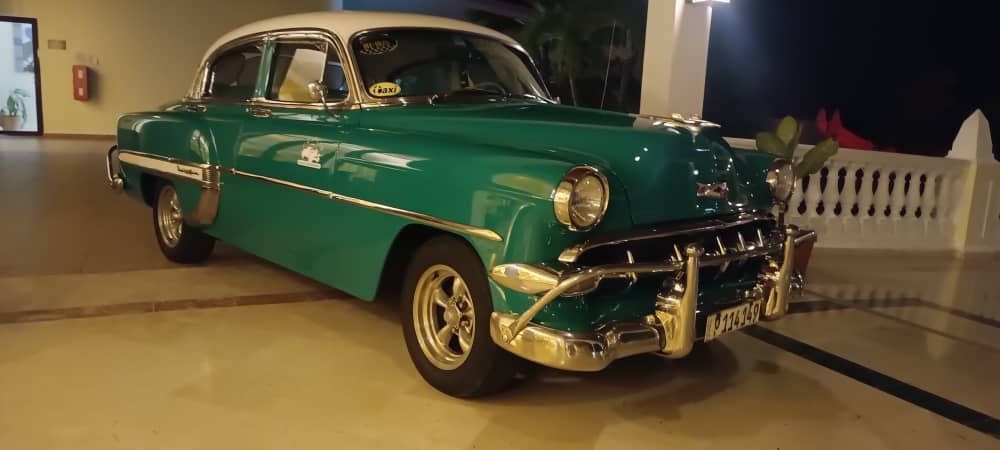The Hidden Language of Cuban Taxi Culture: What Your Ride Says About the Island
The Hidden Language of Cuban Taxi Culture: What Your Ride Says About the Island
When you think of Cuba, a few images likely come to mind: colorful colonial buildings, the rhythm of salsa in the streets, and vintage American cars cruising along the Malecón. But for many visitors, it’s the taxi ride—that spontaneous, unscripted adventure through narrow city streets or sun-drenched highways—that becomes one of the most authentic windows into Cuban life.
Cuban taxi culture is unlike anywhere else in the world. It’s not just about getting from point A to B—it’s a living, rolling expression of Cuban history, creativity, and character. Whether you're a first-time visitor or a seasoned traveler, understanding the “hidden language” behind each ride can transform an ordinary trip into an unforgettable cultural exchange.
The Many Faces of a Cuban Taxi
Cuba’s transportation system is a fascinating blend of necessity and innovation, shaped by decades of economic hardship and creative problem-solving. Here are the main types of taxis you might encounter:
1. Almendrones (Classic American Cars)
These iconic 1950s Chevrolets, Fords, and Buicks are a national treasure—and they’re still going strong. With rebuilt engines, patchwork parts, and vibrant paint jobs, they embody Cuban resilience and ingenuity. Many serve as shared taxis (máquinas) along fixed routes, making them both practical and affordable for locals.
But beyond the mechanics, they carry history. Riding in an almendrón is like traveling through time, with drivers often happy to share the car's backstory, passed down like family heirlooms.
2. Coco Taxis & Bicitaxis
These whimsical three-wheeled vehicles are hard to miss. Coco taxis, shaped like giant yellow coconuts, and bicitaxis, powered by pedaling drivers, are especially popular in Old Havana and other tourist areas.
They may seem touristy, but they serve a real purpose: short-distance travel with a side of personality. Most drivers customize their rides with personal flair—flags, LED lights, or even bobblehead saints on the dashboard.
3. Private Taxis vs. State Taxis
Not all taxis are equal in Cuba. State taxis are often newer vehicles, metered, and more standardized. Private taxis, on the other hand, run a spectrum from spotless sedans to barely-held-together classics. Private drivers often prefer to negotiate a fare up front, and they may offer you insights into local culture, politics, or just a great playlist.
Taxi Slang and Local Lingo
Understanding local taxi slang gives you a backstage pass to Cuban street culture. Here are a few terms to listen for:
"Colectivo" – A shared taxi with a fixed route.
"Particular" – A private ride just for you.
"Botella" – Hitchhiking, common among locals.
"Ponme donde hay" – Literally “Put me where there’s something,” meaning help me get to a good spot or opportunity. It's more philosophical than geographic.
What’s That Sound? Taxi Music as a Clue
A Cuban taxi is also a musical capsule. From reggaetón and salsa to boleros and Buena Vista Social Club classics, what’s playing on the speakers says a lot:
A young driver blasting Gente de Zona might be tuned into Cuba’s modern, global vibe.
An older driver playing Los Van Van or Benny Moré might be reflecting on Cuba’s golden era of music.
Some even create full-on mini-clubs, complete with bass-heavy speakers and flashing lights.
Music becomes a silent (and loud!) communication tool between driver and passenger. A great way to connect? Ask the driver about the artist—they’ll likely have a story.
Unwritten Rules & Social Codes
Cuban taxis operate on a fluid mix of formality and spontaneity. Here are a few things you won’t find in any guidebook:
Sharing a taxi with strangers is common. You might be the first in, but not the last. Don’t be surprised if your ride turns into a mini social gathering.
Negotiate before you get in if the taxi has no meter.
Tipping is appreciated but not obligatory—usually a few extra pesos.
Conversations are part of the ride. Cubans are famously friendly and curious. You might be asked where you're from, if you're married, or what you think about Cuba—it’s just their way of welcoming you.
Under the Hood Matters
Many Cuban cars are Frankenstein vehicles, made from parts of Soviet Ladas, German BMWs, Chinese Geelys, and even household appliances. It’s not just impressive—it’s symbolic of the Cuban spirit: resourceful, adaptable, and proud.
When you ride in one of these cars, you’re witnessing a feat of everyday engineering. Drivers often act as mechanics, constantly maintaining their cars with limited resources. That noise under the seat? It might be the Soviet transmission holding everything together.
More Than a Ride—It’s a Cultural Exchange
Every Cuban taxi driver is a potential tour guide, philosopher, comedian, or historian. The backseat becomes a space of storytelling, of shared humanity, where the tourist and the local meet on common ground.
It’s here that you might learn:
Why your driver speaks perfect Russian.
How he converted his taxi into a family business.
What life was like during the Special Period.
Pro Tips for Travelers
Carry cash in small denominations. Taxis rarely take cards.
Ask for recommendations—many drivers have great food or music tips.
Be open to conversation, but polite if you prefer silence.
Use apps like "La Nave" (the Cuban version of Uber, popular in Havana) if you're not comfortable negotiating.
Your Ride, Your Story
By the end of your trip, you’ll realize: no two taxi rides are the same. Each one is a microcosm of Cuba itself—colorful, complex, surprising, and deeply human. Whether you're cruising in a convertible on the Malecón or bouncing through the countryside in a patched-up sedan, you’re not just getting somewhere. You’re witnessing a piece of Cuba in motion.
So next time you hop into a Cuban taxi, look beyond the steering wheel. Listen to the music, talk to the driver, feel the engine hum. There’s a story there. One that speaks not just of cars and roads—but of Cuba itself.
